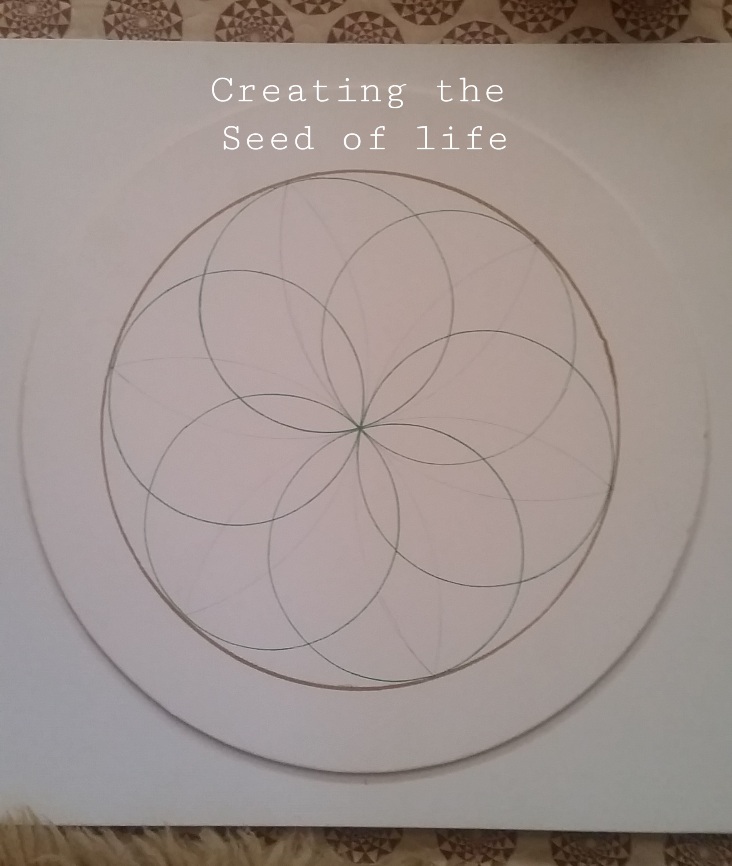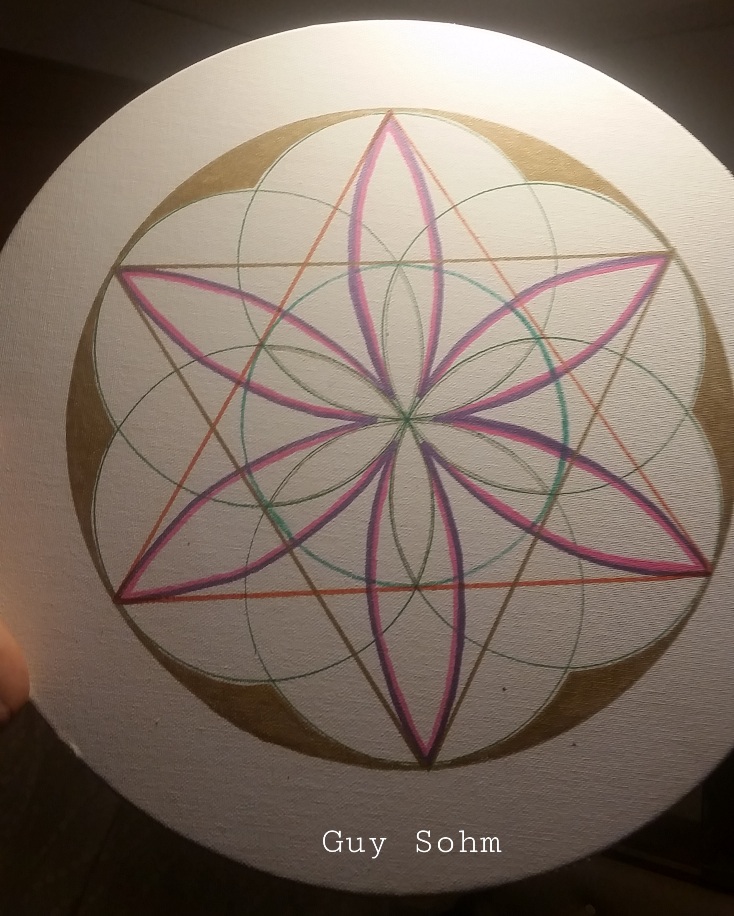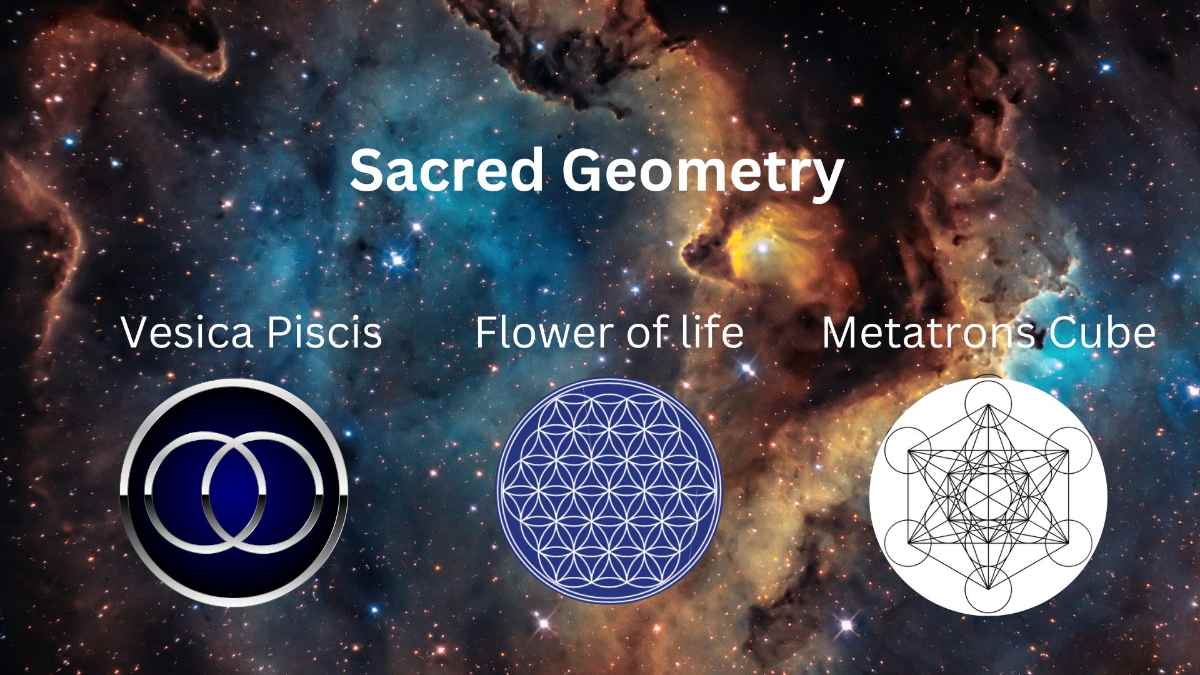Sacred geometry is the study of geometric patterns, shapes, and symbols that are considered to have deep spiritual or mystical significance. Here are some of the different types and energies associated with sacred geometry:
- The Vesica Pisces: The Vesica Pisces is a sacred geometric shape that is formed by the intersection of two circles. It is believed to represent the union of heaven and earth and is often associated with spiritual awakening.
- The Flower of Life: The Flower of Life is a complex geometric pattern that consists of overlapping circles. It is believed to represent the fundamental energy and interconnectedness of all things.
- The Sri Yantra: The Sri Yantra is a sacred geometric symbol from Hindu and Buddhist traditions. It consists of nine interlocking triangles that form a larger central triangle. It is believed to represent the balance and harmony of the universe.
- The Metatron’s Cube: The Metatron’s Cube is a sacred geometric pattern that is said to contain the entire universe. It is made up of 13 circles that are interconnected by lines and is believed to have healing and protective properties.
- The Seed of Life: The Seed of Life is a geometric pattern that consists of seven circles that form a flower-like shape. It is said to represent the seven days of creation in the Bible and is believed to be a symbol of growth and renewal.
- The Golden Ratio: The Golden Ratio is a mathematical proportion that is found in many natural forms, such as seashells and flowers. It is believed to represent balance and harmony and is often used in art and architecture.
- The Fibonacci Sequence: The Fibonacci Sequence is a numerical sequence that is found in many natural forms, such as the spiral pattern of seashells and the branching pattern of trees. It is believed to represent growth and expansion.

- The Merkaba is a geometric symbol that is often associated with spiritual and mystical practices. It is a three-dimensional star made up of two intersecting tetrahedrons, one pointing up and the other down. The word Merkaba comes from the Hebrew language and means “chariot” or “vehicle.” The Merkaba is believed to represent the connection between the physical and spiritual worlds, and is often used in meditation and visualization practices to help individuals access higher states of consciousness. It is said to activate and strengthen the energy fields around the body, promoting healing, spiritual growth, and protection.
Here’s an example of playing with the Seed of Life into an artistic expression with the Merkaba.




Here’s a few mixes for you to hopefully enjoy in your creative potential.
Smooth slow downtempo playlist
- Beats *
We feel by the moon – Luna Deep
The Golden Ratio
A mathematical concept that has been studied for centuries. It is a ratio that is found in nature, art, architecture, and even in the human body. The Golden Ratio is approximately 1 : 1.61803398875 and it is often denoted by the Greek letter phi (φ).
The Golden Ratio has several interesting properties that make it unique. For example, if you draw a rectangle with sides in the ratio of the Golden Ratio, and then draw a square inside the rectangle, the remaining rectangle will have the same proportions as the original rectangle. This can be repeated infinitely, creating a spiral known as the Golden Spiral.
The Golden Ratio is also found in the natural world, from the spirals of shells and pinecones, to the arrangement of leaves on a stem, and the proportions of the human body. For example, the distance from your navel to the floor and the top of your head to your navel are in the Golden Ratio.
The Golden Ratio has been used in art and architecture for centuries, from the proportions of the Parthenon in Athens, to the composition of Leonardo da Vinci’s “The Last Supper,” to the design of the Apple logo. The use of the Golden Ratio is believed to create a sense of harmony and balance that is pleasing to the eye.
The Golden Ratio is a remarkable mathematical concept that has applications in nature, art, and architecture. It is a ratio that is found in many different forms and is believed to create a sense of beauty and balance.
The Fibonacci Sequence
A series of numbers that starts with 0 and 1, and each subsequent number is the sum of the two preceding numbers. So, the sequence goes like this: 0, 1, 1, 2, 3, 5, 8, 13, 21, 34, 55, 89, 144, 233, 377, and so on.
The Fibonacci Sequence was named after Leonardo Fibonacci, an Italian mathematician who introduced the sequence to the western world in his book “Liber Abaci” in 1202. However, the sequence was already known in India hundreds of years before Fibonacci’s time.
The Fibonacci Sequence has some interesting properties and is found in many places in nature, such as the branching of trees, the spiral arrangement of leaves on a stem, the arrangement of seeds on a sunflower, and the shell of a nautilus. In fact, the spiral shape of a nautilus shell closely approximates a Golden Spiral, which is based on the Golden Ratio.
The Fibonacci Sequence also has applications in mathematics, computer science, and cryptography. It is used in the design of computer algorithms, such as the Fibonacci Search Technique, which is a method for finding a specific element in a sorted array. The sequence is also used in cryptography to generate random numbers.
The Fibonacci Sequence is a fascinating and important concept in mathematics that has been studied for centuries. Its properties and applications in nature, art, and science continue to fascinate and inspire researchers and enthusiasts alike.
References & Recommendations
A lovely friend Narada Dan Vantari has been a big inspiration in the journey to understanding sacred geometry. Here’s his website…
https://sacredgeometrical.com/
www.SacredGeometrical.com
And Jain my neighbour absolute legend!! Sacred geometry wizard!
- “Sacred Geometry: Philosophy and Practice” by Robert Lawlor
- “The Geometry of Art and Life” by Matila Ghyka
- “The Power of Limits: Proportional Harmonies in Nature, Art, and Architecture” by György Doczi
- “The Golden Ratio: The Story of Phi, the World’s Most Astonishing Number” by Mario Livio
- “The Fibonacci Sequence: Nature’s Code” by Keith Devlin.

Leave A Response